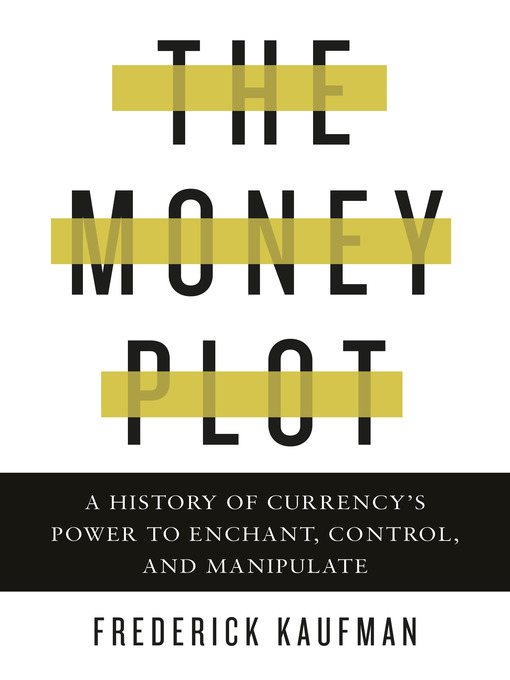
The Money Plot
A History of Currency's Power to Enchant, Control, and Manipulate
کتاب های مرتبط
- اطلاعات
- نقد و بررسی
- دیدگاه کاربران
نقد و بررسی

August 24, 2020
CUNY English professor Kaufman (Bet the Farm) examines human beings’ relationship to money in this fascinating yet somewhat muddled chronicle. His survey ranges from a 65,000-year-old Kenyan bead used to avert evil and bolster good fortune to a volatility index created in 1993 as a measure of investors’ trepidation. Less interested in economic principles than in money as symbol, Kaufman details the history of the “trophy wife” from wife auctions in 17th-century England (famously immortalized in Thomas Hardy’s The Mayor of Casterbridge) to Playboy model Anna Nicole Smith’s absence from her late husband’s will. (“Who leaves property to property?” Kaufman asks, tongue in cheek.) Kaufman also touches on the “prosperity theology” of Oral Roberts, the war between fiat and gold-backed currency, and the relationship between Spain’s 17th-century economic collapse and Don Quixote. Though he doesn’t offer a cohesive treatment of money’s evolution over the centuries, Kaufman has a sharp eye for colorful anecdotes and a witty and incisive prose style. The result is an appealing compendium of musings and money-related minutiae.

September 15, 2020
Harper's contributing editor Kaufman looks at the hidden meanings of money and its uses in ancient and modern cultures. The author trades the brisk, shoe-leather reporting of Bet the Farm for a dense, scholarly history of cash and its metaphorical significance. He posits that money is an allegorical "fiction" in which every element "corresponds to something other than itself and it is up to the reader to break the code and translate the meaning." Drawing on disciplines such as narrative theory and cross-cultural anthropology, Kaufmann analyzes the messages latent in money or its stand-ins, which range from the ostrich-egg-shell beads of Neolithic Kenyans to bitcoin. "Currencies" have included slain warriors' wives, who often became concubines of their husbands' killers in ancient Greece, and Native American wampum, which served as a "historical record of treaties and transfers of property." Tracing the impact of the rise of financial markets, Kaufman links events and ideas as disparate as Richard Nixon's decision to untether the dollar from gold and Claude L�vi-Strauss' concept of the "floating signifier." The author is skeptical of newer, near-inscrutable tools like the Chicago Board of Exchange's volatility index, or "the Fear Index." If we can't decrypt such innovations, we risk "becoming pawns and shells ourselves, other people's money." Kaufman's prose is often turgid--one example: "The acolytes of Bachelier, Bhattacharya, Black, Scholes, and Natterberg live in a world only they can perceive; a world where a Delta hedge is simply one of a multitude of back spreads, front spreads, diagonals, Christmas trees, butterflies, condors, strangles and other baroque trading strategies"--but the book may interest readers with tastes broad enough to encompass ancient Greek philosophy, The Golden Bough, corporate strategy, A Random Walk Down Wall Street, cryptocurrency, and detailed discussions of literary theory and its relation to monetary policy or investment strategy. Others may wonder if its ideas, complex as they are, couldn't have been more effectively presented in a long-form magazine article. An erudite but sluggish overview of the role of money throughout history.
COPYRIGHT(2020) Kirkus Reviews, ALL RIGHTS RESERVED.

























دیدگاه کاربران